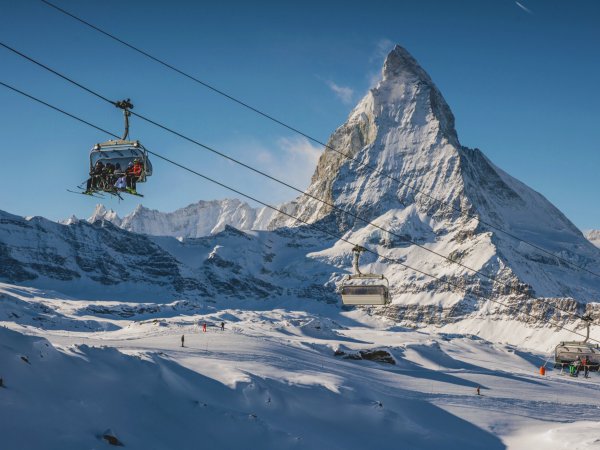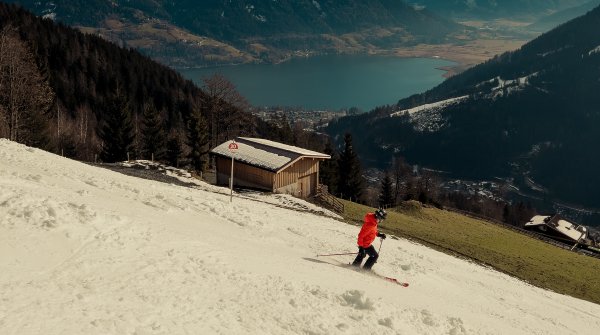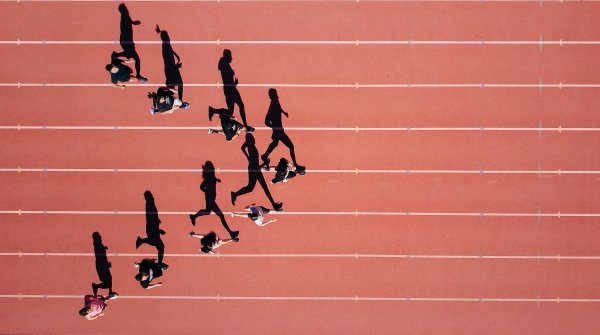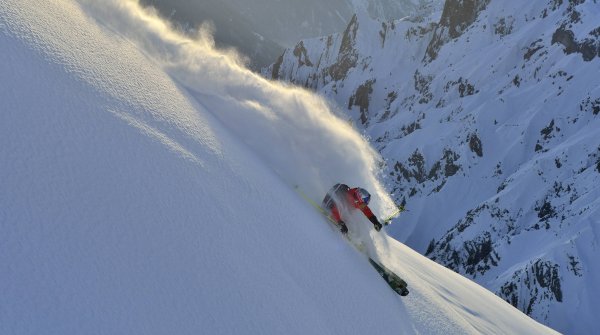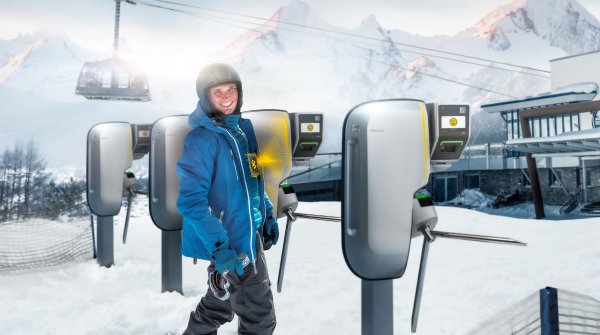We all know and love it: the magic of winter. Snowflakes dance gently to the ground, a white blanket covers our everyday stress. Noise is muffled, the pace is slowed down. Snowmen, sledges, skiing fun instead of staff shortages, price pressure and presentations. And despite the climate crisis and melting glaciers they will continue to existThe snow days, when the experience of nature unites people from young to old in fun in a way that hardly any other event can. "The snow offers us an alternative world to everyday life. We can make turns wherever we want. We experience freedom and exercise, which has been proven to have enormous health benefits, even when we are out and about on foot in these enchanted landscapes," emphasized Professor Ralf Roth, Head of the Institute for Outdoor Sports and Environmental Research at the German Sport University Cologne, at ISPO Munich. "That's why every winter sports enthusiast should be a climate protector in their own right."
"As a result of global warming, the natural snow cover suitable for snow sports will continue to decrease in the long term, especially up to the middle altitudes in the Alpine region," says the position paper of the expert forum KLIMA.SCHNEE.SPORT from the Stiftung Sicherheit im Skisport, the German Sport University Cologne and the Karlsruhe Institute of Technology. The duration of snow cover is slightly shorter in late winter than in early winter. Climate scenarios show that winter precipitation in the Alpine region will increase and precipitation extremes will become more likely. However, this is subject to a high degree of variability and only applies to high altitudes. At medium altitudes, precipitation will increasingly fall as rain due to the higher temperatures. In addition, certain weather conditions can tend to last longer and thus characterize a large part of the season. In dry conditions, snowmaking therefore requires a lot of energy and water - a point of criticism that climate activists like to make. However, this criticism often falls short, as the participants at the symposium "Your winter. Your sport." symposium at ISPO Munich 2023.
According to Skimagazin, around 125 million cubic meters of water are used for technical snowmaking throughout the Alps. At least around 300 billion cubic meters of precipitation fall on the approximately 200,000 square kilometers of the Alps every year. Snowmaking accounts for only 0.04 percent of this. Jörn Homburg, Head of Marketing and Product Development at Oberstdorf-Kleinwalsertal Bergbahnen, also explained that the water for snowmaking comes from reservoirs and flows back into the natural cycle when the snow melts. "The bottom line is that we use zero liters of water for snowmaking, we borrow it and return it in full to nature in spring."
In fact, the energy consumption of ski resorts only accounts for a very small proportion of total energy requirements. In Austria, according to a study by the Federal Environment Agency, it accounts for 0.9 percent of national final energy consumption for winter tourism as a whole, including gastronomy and accommodation. In addition, ski resorts obtain an above-average proportion of their electricity from renewable sources. According to Skimagazin, this figure is already almost 90 percent in Austria and around 74 percent in Germany, according to Jörn Homburg. With the expansion of photovoltaic systems and new large pumped storage power plants - such as in Kühtai, Tauernbach-Gruben or Limberg III in Kaprun - this proportion will continue to rise. Panel participant Beate Rubatscher-Larcher, Managing Director of the Kaunertal and Pitztal glacier lifts, drew a vivid comparison with energy consumption: "Half an hour of jet skiing in summer consumes as much energy as 5.5 days of skiing. We simply have to look at the ratios more closely.
In addition to snowmaking, the snow groomers are the main contributors to the eco-balance. According to calculations by the "Snow Space Salzburg" ski resort, more than half of the CO2 emissions are caused by the vehicle fleet. A snow groomer consumes up to 500 liters of diesel per day. Although some new models already have a hybrid drive, which roughly halves consumption, complete electrification is not yet in sight, apart from caterpillars for cross-country ski trails. However, the newer snow groomers from Kässbohrer or Leitner can be operated with HVO fuels (Hydrotreated Vegetable Oil) on a vegetable basis, for example from deep-frying fat. This reduces CO2 emissions by 90 percent. In the Oberstdorf-Kleinwalsertal ski area, HVO is already being used for all piste rollers are already in use. "This saves around 1,800 tons of CO2 per season and reduces our ecological footprint by 60 percent," says Jörn Homburg. For its part, Prinoth AG hopes to go into series production with a hydrogen-powered snow groomer in 2025. Regardless of the drive system, geodata and snow depth measurements already ensure that the snow groomers are used as efficiently as possible. This saves snow and energy.
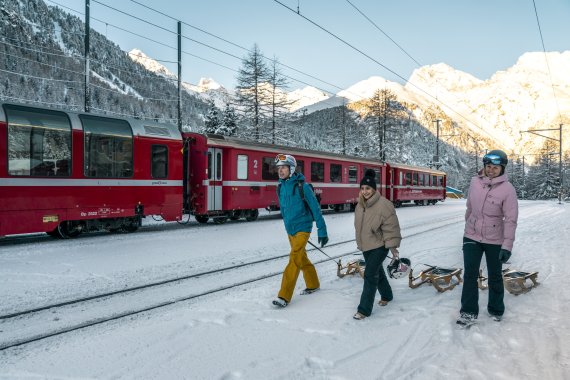
According to a study by ETH Zurich, three quarters of the total CO2 emissions for a one-week ski vacation are caused by the journey to and from the resort. For ecological reasons, it is therefore advisable to travel by train and spend twelve days on site rather than four times three. However, climate change is putting snow reliability into question, especially at the start of the season (Christmas vacations) and the end of the season (Easter vacations). As a result, people prefer to use their cars for spontaneous short trips in ideal weather conditions - especially as train tickets become more expensive the more spontaneously they are booked. In this context, Ralf Roth initiated a discussion about the vacation dates in Germany. In some federal states, the winter vacations are already in February, when snow is relatively certain.
But there are also solutions for travel: Deutsche Bahn is currently investing massively in the refurbishment of its lines, says Thomas Kemper. "We are offering more trains, more ICE Sprinters and more direct connections to Munich and the ski resorts," said the Head of Market Communication at Deutsche Bahn Fernverkehr AG at ISPO Munich. To simplify booking, the offer portal was launched in cooperation with "Dein Winter. Dein Sport.", the WinterRail offer portal was initiated. "We are open to further ideas," promised Thomas Kemper.
Together with the regional association of cable cars and Tirol Werbung GmbH, the Austrian Federal Railways have put together attractive vacation packages that combine travel by train with ski passes for the major Tyrolean ski resorts. These combination tickets including the "Nightjet" night train are becoming increasingly popular, especially in Germany and the Netherlands. Other ski resorts are also promoting climate-friendly travel, for example by offering discounts on ski passes or discounted equipment hire.
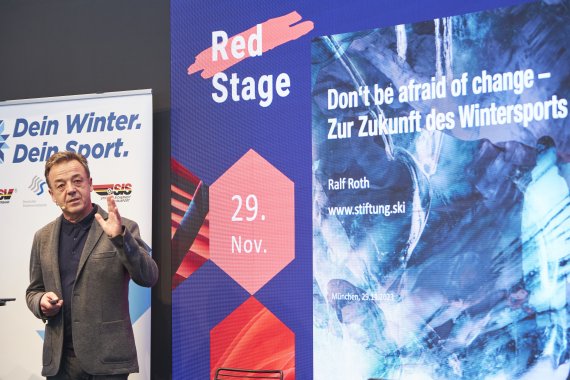
In the "Best Ski Resorts" study, for which almost 50,000 guests were surveyed in 54 ski resorts in the Alps in 2023, satisfaction fell for the second time. This is attributed to the price-performance ratio: Both ski pass prices and the cost of accommodation and meals have risen significantly. The cost issue poses a major challenge for winter sports. As understandable as rising prices are due to the economic situation and the many measures for more climate protection, it is also clear that fewer and fewer people can afford a skiing vacation. There is a measurable decline in guests aged 65 and over in particular. But there is also a lack of young people - both in top-class and popular sports. "Access to winter sports is crucial. And if more and more small lifts have to close, whether for cost or climate reasons, then we have to solve this together as an industry," said Ralf Roth at the ISPO Symposium.
"We are still seeing a profit from the price increases, but this could become a problem in the long term if guests stay away," confirms study author Mike Partel to the magazine "Seilbahnen International". If the snow-sure season is shorter and the supply becomes scarcer or more effort has to be made to maintain the supply, prices at high altitudes could continue to rise - and the regions could reach their limits. Around a third of those surveyed in the study already stated that they felt the ski area was overcrowded. "This trend could be counteracted with targeted management of visitor flows or restrictions," says Mike Partel.
This is already being done in Switzerland, as Vivienne Hosennen from Switzerland Tourism explained at ISPO Munich. The "Swisstainable" concept aims to better balance visitor flows in future. "We want to become the most sustainable tourism destination in the world. To achieve this, we want to attract guests from all over the world to Switzerland not just in summer and winter, but all year round. We want them to stay with us for longer and not just visit the highlights in 48 hours".
A more even flow of visitors would also be important for the preservation and attractiveness of jobs in the Alpine region. Entire regions often depend on tourism - from ski lift staff to craftspeople and doctors. At the same time, it is becoming increasingly difficult to find enough staff. Shortening the season would make the situation even worse due to the uncertainty.
Many ski resorts are therefore focusing on alternatives to alpine skiing: winter hiking trails, tobogganing, ski tours, but also wellness and offers for children are being expanded. And there are also a number of technical developments, such as autonomous (gondola) cable cars and ski service robots, which can relieve the burden on specialist staff, especially in rental shops.
Speaking of rental: around 70% of the 396,000 pairs of skis sold in Austria (alpine & touring) were rented in the 2022/2023 season - 10% more than before the coronavirus crisis. "Renting instead of buying is becoming a trend. There are ecological and financial reasons for this," says Michael Schineis, President of Winter Sports Equipment at Amer Sports, in a VSSÖ press release. However, the main driver is diversity. Skiers want to test several models, technologies and brands during their vacation. Doubledeck Snowboards takes a different approach to the topic of rental: With the "Let to Rent" program, winter sports enthusiasts can rent the innovative snowboards directly via the website for a monthly fee instead of buying them.
With its Salomon and Atomic brands, Amer is driving forward the issue of sustainability in winter sports. Among other things, Salomon used textile waste from ski boots for the interior design of its new store in Annecy. Atomic organized the first Ski Industry Climate Summit in autumn 2023 with the support of the Federation of the European Sporting Goods Industry (FESI) and the NGO Protect Our Winters (POW). According to Ronny Schwarzenbrunner, special attention was paid to recycling. "Currently, ski boots can be remade from recycled or partially recycled material for two to three cycles. After that, the performance decreases." Another problem is the variety of materials. "With skis, we try to sort as much as possible so that we can reuse it ourselves. The best case scenario would be a closed loop, meaning that a ski becomes a ski again," the Atomic sustainability manager told Skimagazin. "We can make our products as easy to dismantle as possible, but performance and robustness must not suffer as a result. The quality must remain constant, otherwise the impact of the ski is suddenly higher."
There are already products on the market that are made largely from organic or recycled material - for example, the "Essential" ski from Rossignol, which is 73 percent organic, or the ISPO Award winner 2023 Ferreol Surfeur 112 ski. To maintain performance, Ferreol has replaced synthetic fibers such as fiberglass and carbon with natural flax fibers.
The winter sports equipment manufacturers Atomic, Head, Fischer, Blizzard - Tecnica and Leki joined forces with the ecoplus plastics cluster in Lower Austria at the beginning of 2024 to promote the recycling of ski materials in the WINTRUST (Wintersport Resource Efficiency and improved Circular Economy) cooperation project. The aims of the research project are to establish a corresponding collection system and to analyze and evaluate processing options for used winter sports equipment in order to return as much of the valuable material as possible to the cycle.
How does climate change impact snow security in the Alps?
Climate change reduces the natural snow cover, especially in mid-altitude regions. While precipitation increases, snowmaking is needed during dry periods. Ski resorts emphasize sustainability efforts, including recycling and the use of renewable energy.
How does climate change affect travel planning for ski vacations?
The journey to and from a ski vacation contributes significantly to CO2 emissions. Climate change affects snow security, leading to spontaneous car trips. Solutions include eco-friendly travel options, improved train connections, and vacation packages.
Why has guest satisfaction and the price-performance ratio declined in ski tourism?
The "Best Ski Resorts" study shows decreasing satisfaction due to rising ski pass and accommodation costs. Price increases could drive away guests in the long term. Ski resorts experiment with visitor management to prevent overcrowding.
How does winter tourism affect job security in the Alpine region?
Tourism is crucial for many regions, but a labor shortage is a problem. Ski resorts diversify with winter activities, technologies, and ecological initiatives to maintain jobs.
How do ski resorts promote sustainability and recycling in winter sports?
The majority of skis are increasingly rented, offering ecological and financial benefits. Brands like Salomon and Atomic focus on recycling materials. Challenges include maintaining performance and transitioning to closed material loops.
- ISPO awards
- Mountain sports
- Bike
- Design
- Retail
- Fitness
- Health
- ISPO Job Market
- ISPO Munich
- ISPO Shanghai
- Running
- Brands
- Sustainability
- Olympia
- OutDoor
- Promotion
- Sports Business
- ISPO Textrends
- Triathlon
- Water sports
- Winter sports
- eSports
- SportsTech
- OutDoor by ISPO
- Heroes
- Transformation
- Sport Fashion
- Urban Culture
- Challenges of a CEO
- Trade fairs
- Sports
- Find the Balance
- Product reviews
- Newsletter Exclusive Area
- Magazine
